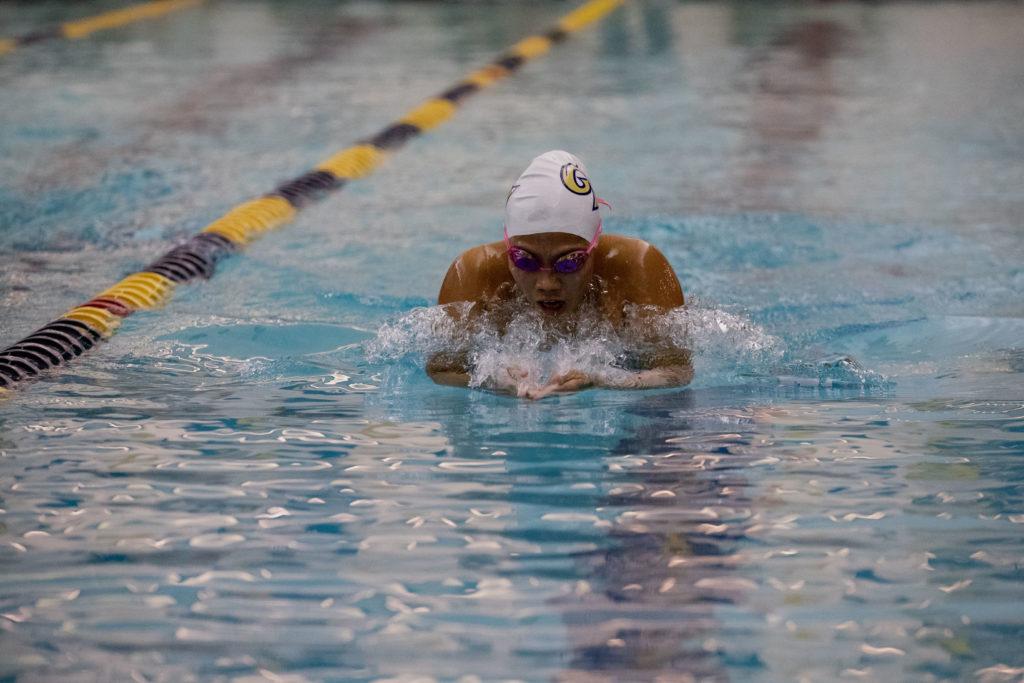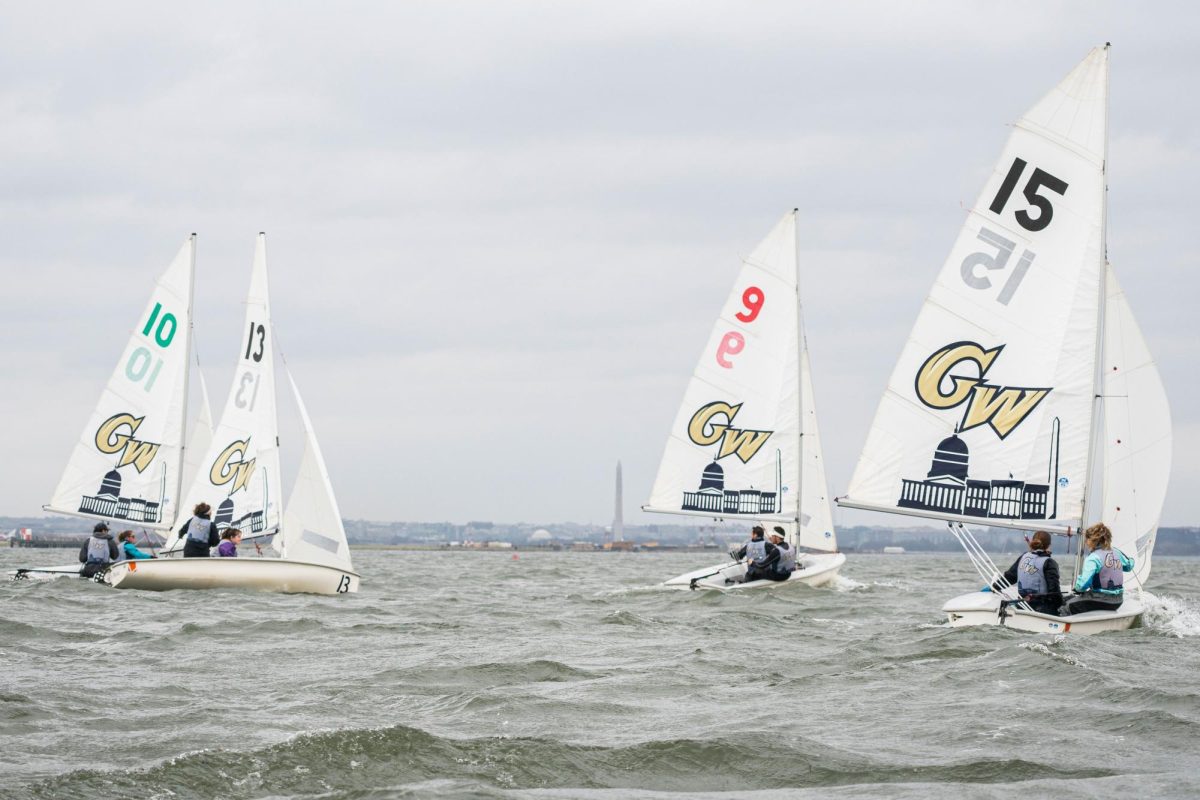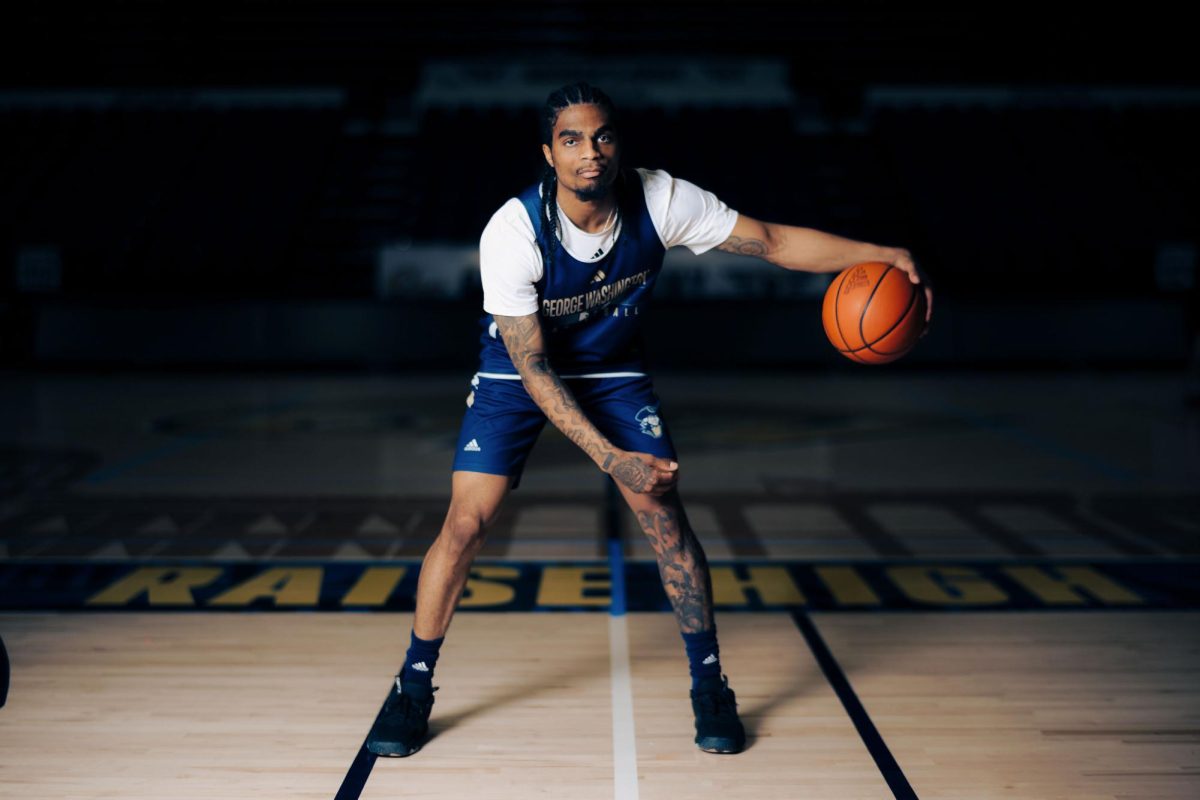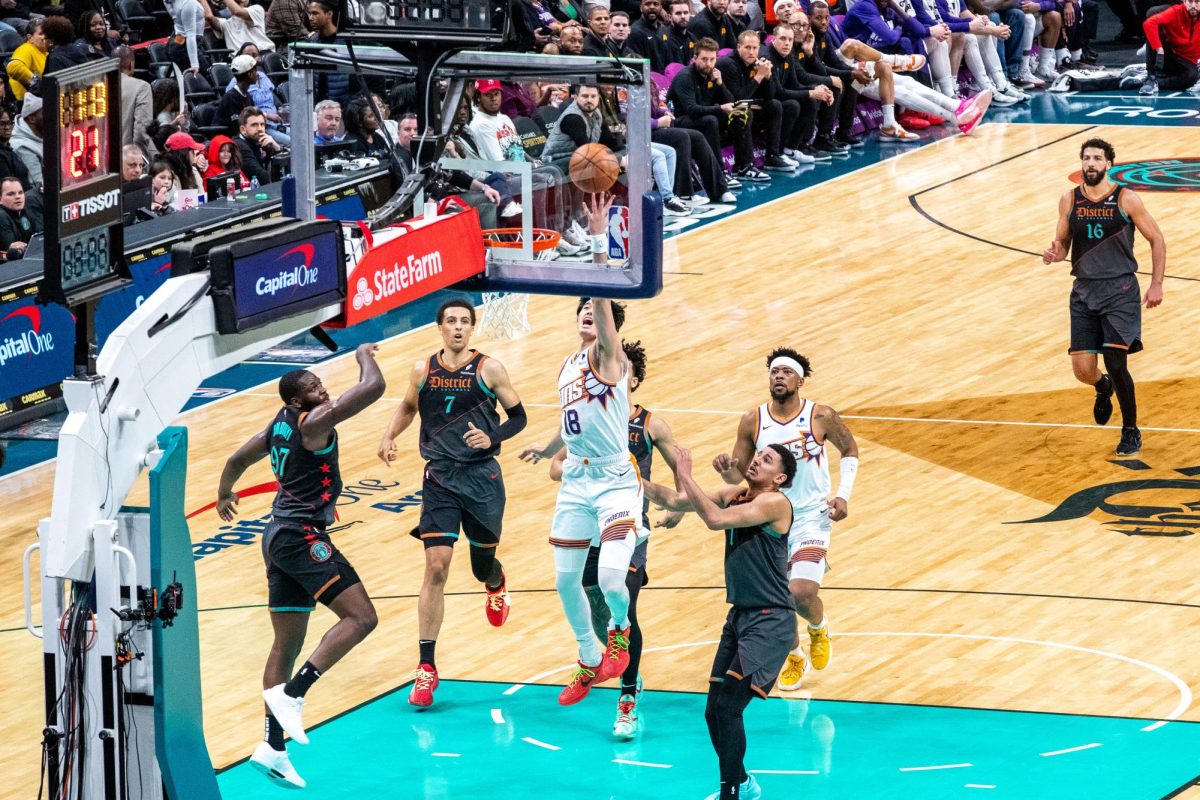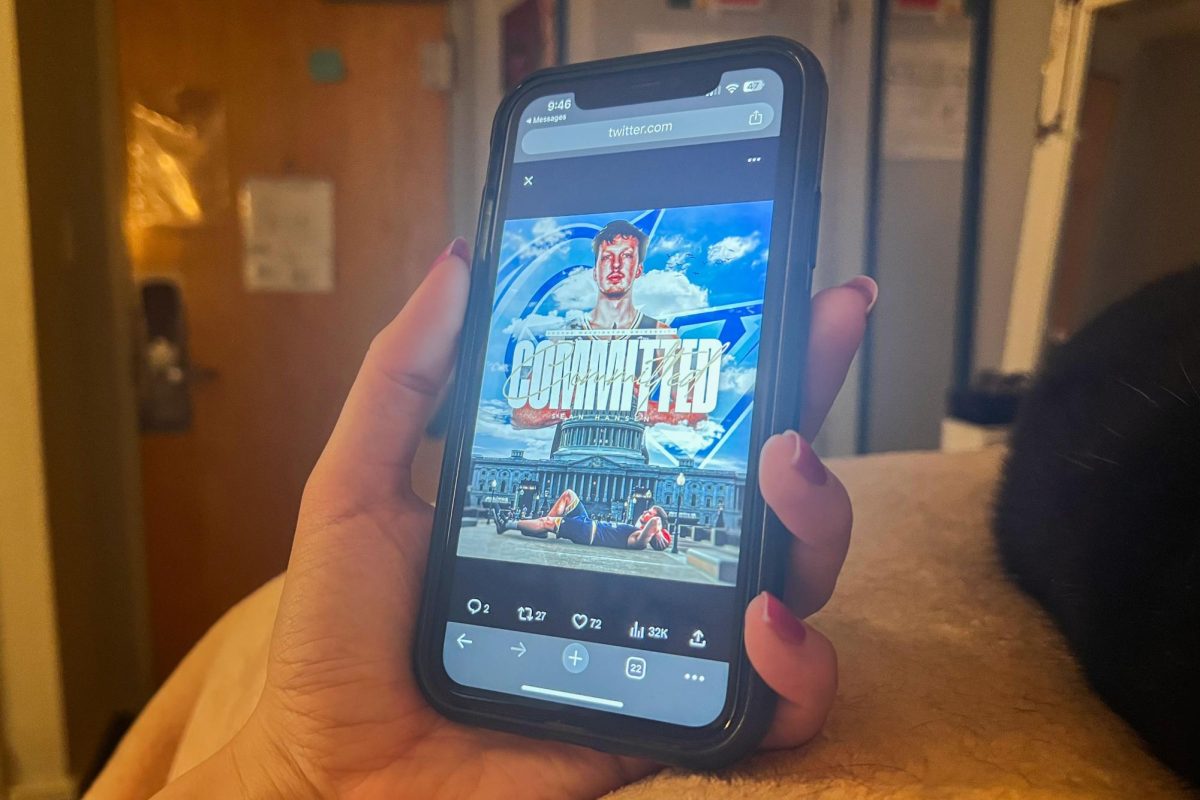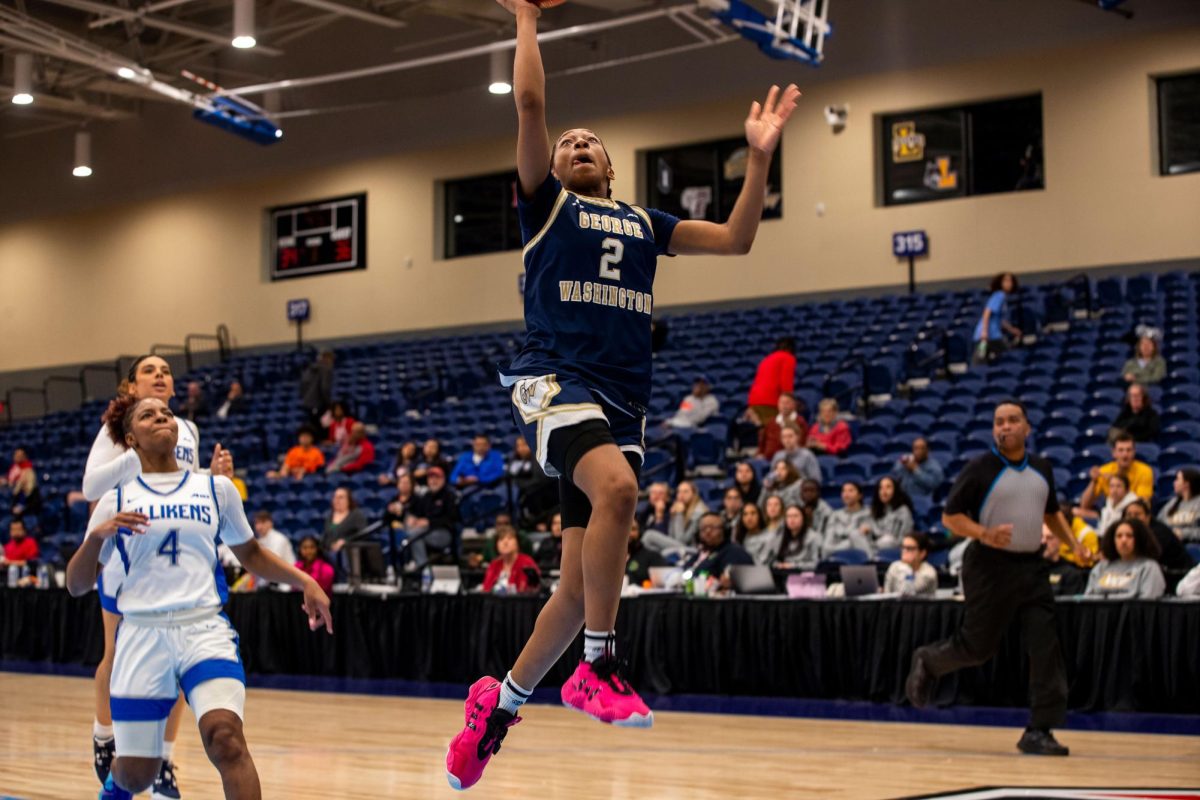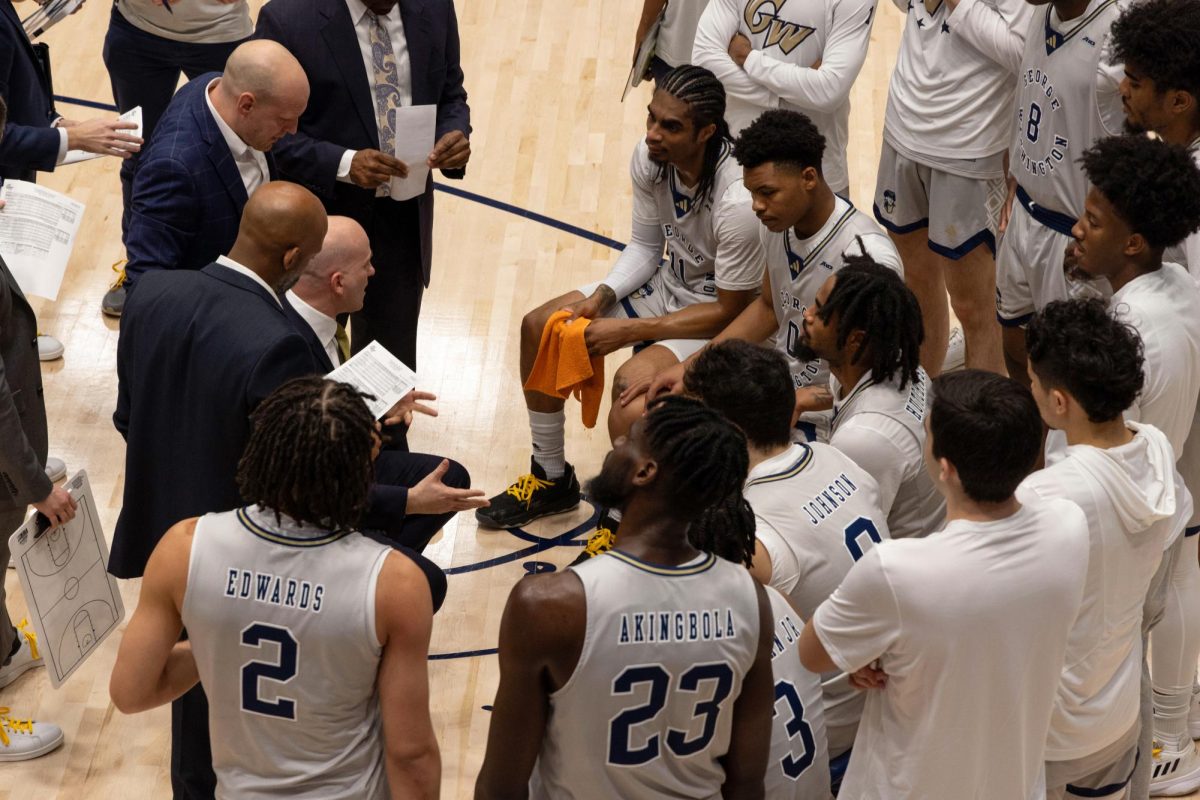With fall sports delayed until the spring semester, The Hatchet is checking in with head coaches from affected programs to gain insight on how each team is handling the pause on competition. Check back each week for new installments.
Despite an uncertain competition timeline, the swimming and diving programs are relying on team culture to maintain focus on the year ahead.
When the Atlantic 10 postponed fall play, the men’s and women’s swimming and diving squads lost competition experience. Head coach Brian Thomas said just more than half of the squads are back in D.C. and preparing for an unknown start date to the 2020-21 season.
Like most programs, swimmers and divers restarted in-person practices using GW facilities. To maintain adequate social distancing, Thomas said practices are held at various facilities, including the Smith Center, the Mount Vernon Campus and the St. James sports complex in Springfield, Virginia.
Thomas said 30 of the 52 rostered student-athletes across the men’s and women’s programs are back in D.C. for the semester. He said athletes who didn’t return to campus are training with competitive club teams at home, and he regularly checks in with their club coaches each week.
He added that the team is hosting multiple team meetings each week, one at 8 a.m. and another at 3 p.m., to stay in touch with student-athletes dealing with time differences. Some athletes are residing on the West Coast, in various European countries, Australia and Singapore.
Although swimming and diving is a winter sport, the teams typically begin competing in early October. Last season, GW opened play in the FIU Fall Classic Oct. 4.
Throughout the fall schedule, which lasts from October through late November in a normal season, players typically compete to gear up for the A-10 Championships in the winter, Thomas said. He said athletes won’t make up for the lost competition time in the winter because it conflicts with the height of competition season.
“If we were to pack our schedule in January, competing every week or weekend, it might be a detriment,” he said.
Thomas said the A-10 championships are “tentatively” slated for its usual February time slot, but nothing is set in stone. The women’s program nabbed their first A-10 crown last season, and the men’s squad captured three championships in the last four years.
“At this point, we’re still a little unsure as to when we’re going to be able to compete,” Thomas said.
Despite the uncertainty, Thomas said his players have had no problem staying motivated. Some are gearing up for the U.S. Olympic trials, which have been postponed until next June, he said.
Some swimming and diving programs in conferences like the Southeastern Conference and the Big Ten, which opted to continue with fall competition to some degree, have already returned to the pool. Thomas said he’s received “a lot of interest” from other conferences about setting up nonconference competitions.
The two squads held their last competition in March. Thomas said taking a six-month break from the pool is unusual, but he and his staff are trying to act as safely as possible to avoid injury and follow the return to athletics guidelines.
“We just have to think about it logistically and put it together step by step,” Thomas said. “Literally, how are we going to walk on to the pool deck and make it safe?”


